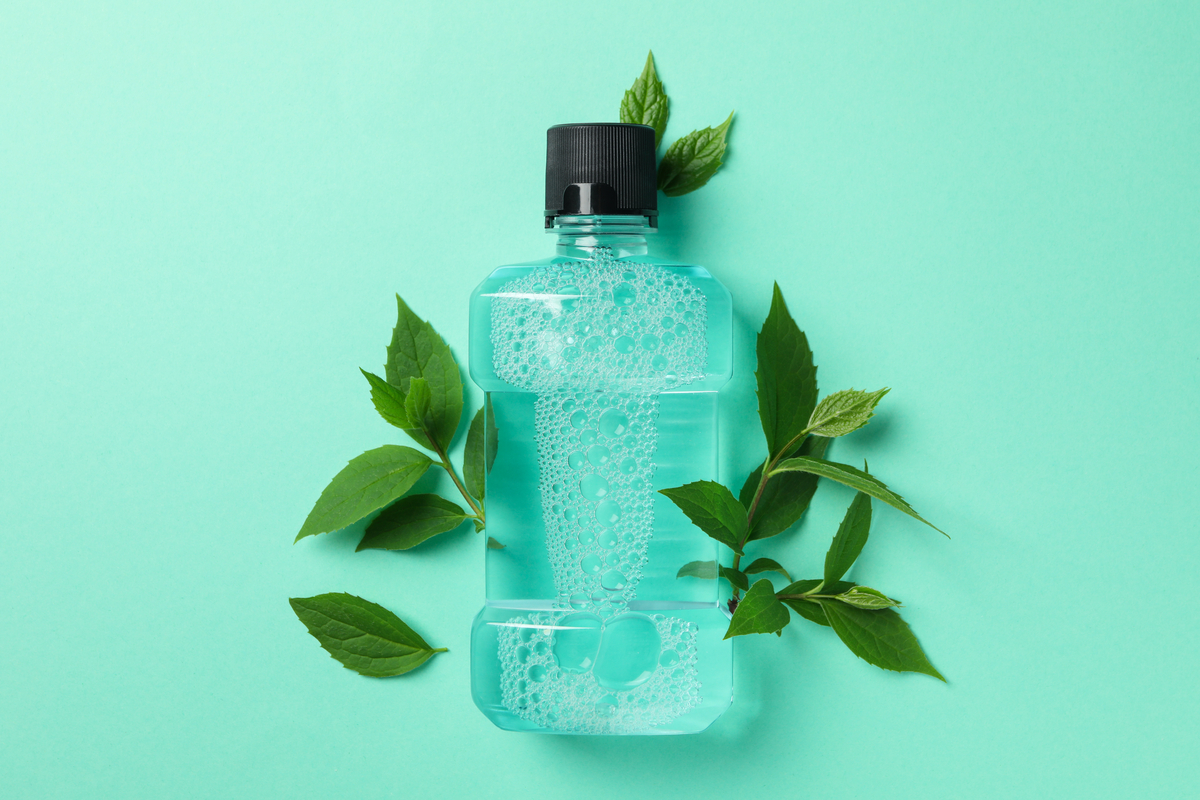Running low on cleaning products? Foul odors around your home? You don’t always need fancy cleaning supplies to get your home clean and fresh in a pinch. You just need this simple cleaning hack. There’s one household product sitting in your medicine cabinet that can unexpectedly serve as a backup cleaner: mouthwash. That’s right, the product that freshens your mouth can also freshen your home. Here’s how.

How is using mouthwash a cleaning hack?
Minty fresh mouthwash doesn’t just freshen your breath with artificial flavors. It has antibacterial and antiseptic properties that kill bad breath at its source, which is almost always bacteria. Cleaning your home is similar to cleaning your mouth. You want to get rid of bacteria that would produce foul odors and possibly cause illness.
Household uses for mouthwash
We’ll walk you through how to use that breath freshener to eliminate bacteria hot spots in your house. Without further ado, here are some unexpected cleaning jobs that your mouthwash can help with in your home.
Cleans your toilet in a pinch
If you’re out of toilet bowl cleaner, mouthwash works like a charm for a quick clean. With only 1/4 cup of mouthwash, your toilet will be sparkling and fresh. Simply pour it right into the bowl and let it sit for 30 minutes before scrubbing out the bowl with your toilet brush.

Kills odors in smelly laundry
Stubborn odors in laundry are a real drag. If you wash your dirty clothes just to have foul odors stick around on the fabric, there’s probably some persistent bacteria hanging out on the garments that are producing the smell. Add a cup of mouthwash to your load of laundry, in addition to detergent, and run the regular cycle of your washing machine. The antiseptic ingredients will kill that pesky bacteria once and for all and leave behind a fresh scent.
Refreshes your gross garbage disposal or drains
Drains can get stinky, particularly in the kitchen, where decomposing food particles attract a ton of bacteria and mold. Pour a few ounces of mouthwash into the drain and run the garbage disposal for a little while. If the smell persists, repeat with a few more ounces of fresh mouthwash.
Freshens up foul-smelling garbage
If you don’t produce a ton of garbage in your house, the food you throw away in the kitchen can sit in the can for a long time before you take it out. That means food particles are rotting and attracting odor-producing bacteria in your kitchen. If you’re not ready to take the trash out yet, a quick fix to smelly garbage is to pour mouthwash on a piece of paper towel and toss it into the trash. It will kill odors and freshen up the bin temporarily until you’re ready to haul out the trash.
Substitutes as glass and screen cleaner
It sounds crazy, but mouthwash can actually get glass surfaces cleaned and fairly free of streaks. This includes windows, mirrors, and even the screens of TVs and devices, as long as they’re not LCD. Just dab a bit of mouthwash on a microfiber cloth and wipe the glass surface.
Kills mildew and fungus on house plants
If your plant babies are showing signs of fungus or mildew, diluted mouthwash can go to war against the invading substance and save your greenery. In a spray bottle, mix three parts water and one part mouthwash and spray the mixture on your plants. Keep spraying the plants once per week until you’re confident the fungus or mildew has been eradicated.
A smelly home is not one with very much joy. If you’re detecting foul odors from laundry, garbage, drains, or toilets, the antibacterial properties of mouthwash can come to your rescue. Use it in a pinch, or even in your regular cleaning routine, for a home that’s fresh and clean at all times.



